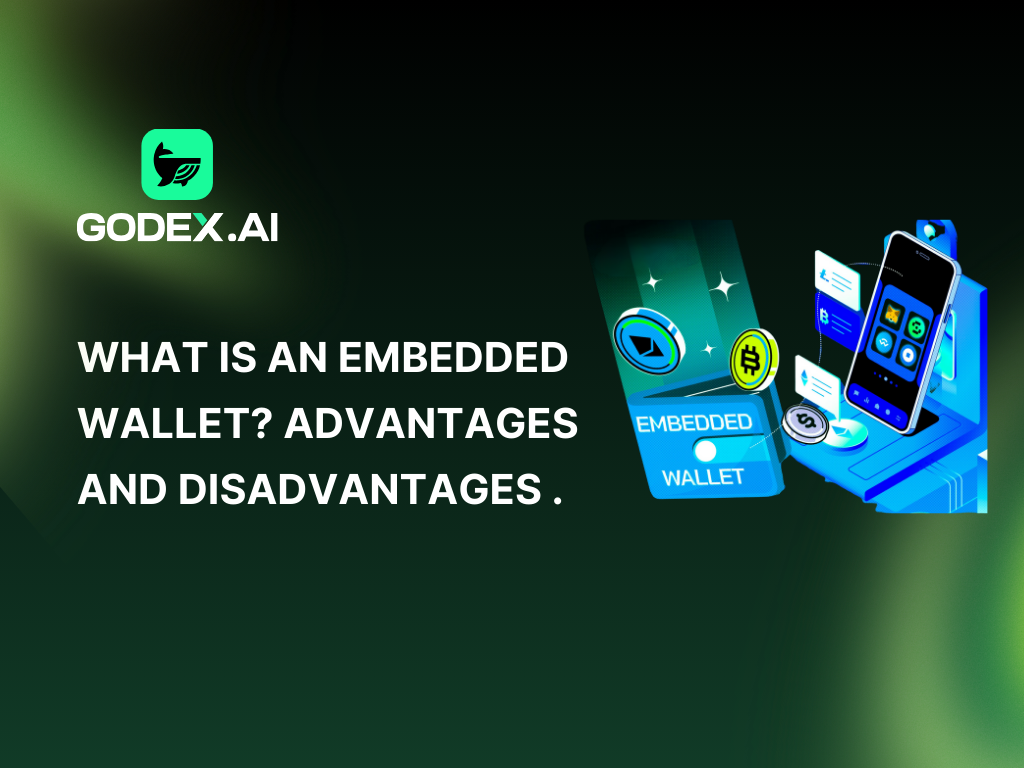What is Embedded Wallet?
An embedded wallet is a type of cryptocurrency wallet that is integrated directly into an application or platform as part of the application itself, aiming to create a seamless and convenient experience for users.
Unlike standalone wallets like MetaMask or Trust Wallet that require users to download and log in separately, embedded wallets offer a “one-click” experience for managing cryptocurrencies that is suitable for beginners. Users can make transactions and manage their crypto assets right within the interface of the application they are using without having to download or switch to a separate wallet application.
When was Embedded Wallet created?
Embedded Wallets are still relatively new, only starting to gain traction around 2021 when Web3 and NFTs exploded. Before that, most crypto wallets were standalone wallets like MetaMask, Trust Wallet, or hardware wallets. These types of wallets required users to download and set up a separate application to manage their assets.
With the explosion of DeFi and GameFi in 2021-2022, developers saw an urgent need for smoother user experiences. As a result, they started building embedded wallets to integrate into DeFi applications and platforms, allowing users to use crypto without leaving the native application.
How Embedded Wallet Works
Embedded Wallets work by integrating directly into decentralized applications, creating a seamless and convenient experience for users. Unlike traditional wallets that require separate application installation and management, Embedded Wallets exist right within the dApp interface, simplifying the transaction process while ensuring security.
In addition, this type of wallet also supports private key recovery through multi-party computation technology. Private keys are linked to multiple recovery sources such as personal devices or emails, making it easy for users to restore access when needed. To enhance security, Embedded Wallets often add two-factor authentication ( 2FA ), ensuring more safety against unauthorized access risks.
Here is the detailed process of how Embedded Wallet works:
- Private Key Generation: When a user creates a wallet, a private key is generated directly on the user’s device, based on 128 bits of randomly selected entropy. This entropy is converted into a BIP-39 standard mnemonic phrase to generate a wallet key pair. This is the core part that ensures that the user has full ownership and control over their keys.
- Key Splitting: For increased security and recovery, the private key (mnemonic) is split into multiple parts (shards) using the Shamir Secret Sharing method. In Privy’s system, the mnemonic is split into three parts, two of which are owned by the user and one is securely stored by Privy. This means that Privy cannot access the user’s key itself and the user can still recover the key without going through a third party.
- Integration with dApps: Embedded Wallets are embedded directly into dApps, eliminating the need for users to download or set up separate wallet applications. Users can interact directly with the dApp with the built-in wallet, eliminating the hassle of switching between multiple applications.
- Meta-transaction: One of the standout features of Embedded Wallet is the use of meta-transactions. In this, users only need to perform an action on the dApp to express their intention to transact, and an intermediary party (relayer) will perform the transaction on the blockchain on the user’s behalf, while paying the gas fee. This helps to remove the barrier of transaction fees, making the user experience smoother.
- Recovery Process: In case the user loses access, Embedded Wallet allows private key recovery by regenerating from sources such as email, other devices or password. This security system gives users peace of mind without worrying about losing the recovery phrase.
Embedded Wallet also has security features like two-factor authentication (2FA) and does not transmit private keys or sensitive data over the network or to a server. All operations are processed directly on the user’s device, creating a safe and secure environment.
What problem was Embedded Wallet developed to solve?
Built into an application or platform: an embedded wallet does not exist as a standalone application. Instead, it is embedded directly into a specific application such as a blockchain game, DeFi application, decentralized exchange ( DEX ), or Web3 platform. Users can make transactions without leaving the main application.
No need to download or install a separate wallet: embedded wallets usually do not require users to download a separate wallet application like MetaMask or Trust Wallet. The wallet is already integrated into the main application and users only need to create an account or log in to use the wallet.
Seamless experience, no need to switch apps: Users can manage assets and make transactions directly from the main app interface. This means they don’t have to open another app to complete transactions, making for a convenient and seamless experience.
A survey from Crypto Adoption Research Report 2023 found:
-
65% of new users find it difficult to set up a standalone wallet for the first time, including tasks like managing private keys and backing up keyphrases.
-
Meanwhile, 85% of users said they felt more satisfied using embedded wallets due to the direct integration within the app and the need to switch back and forth between platforms.

Simplified private key management : embedded wallets often automate or minimize the requirements associated with private keys. Depending on the platform, security keys may be managed by the platform or by a custodian. This eliminates the need for users to remember or maintain private keys, minimizing the risk of asset loss.
Suitable for new or non-technical users: By eliminating many complex technical steps, embedded wallets are often designed to be easy to use and aimed at general or new users who want to experience blockchain without needing a deep understanding of technical concepts like private key management.
Additionally, according to data from DAppRadar, platforms using embedded wallets have:
-
30% reduction in development costs associated with supporting external wallet integration.
-
Reduce deployment time by 25% , allowing platforms to launch products quickly and easily attract new users.
Disadvantages of Embedded Wallets
While embedded wallets offer many advantages, they also have some limitations:
Limited control with private key
Designed to simplify the process of use, many embedded wallets omit the seed phrase, which makes it easier for new users to access but also poses a significant risk. If someone hacks into the account, the user could lose control with no way to recover their assets, creating a sense of insecurity.
Depends on the platform
Since an embedded wallet is integrated into an application or website, users are dependent on that platform. If the platform stops supporting it, it may affect their ability to access their wallet and assets.
For example, if you are using a dApp and that platform goes down, your assets could be temporarily “locked” in the app over which you do not have full control.
Limited features
Compared to standalone wallets, embedded wallets mainly support only basic operations such as storing and transferring assets. Those who want to participate in more complex activities such as staking or trading on different chains may feel disappointed because the wallet does not support or only provides basic features.
Some embedded wallets today:
-
Alchemy Embedded Wallet
-
Privy
-
Magic
-
Dynamic
-
Bitzaro
-
Blockradar



